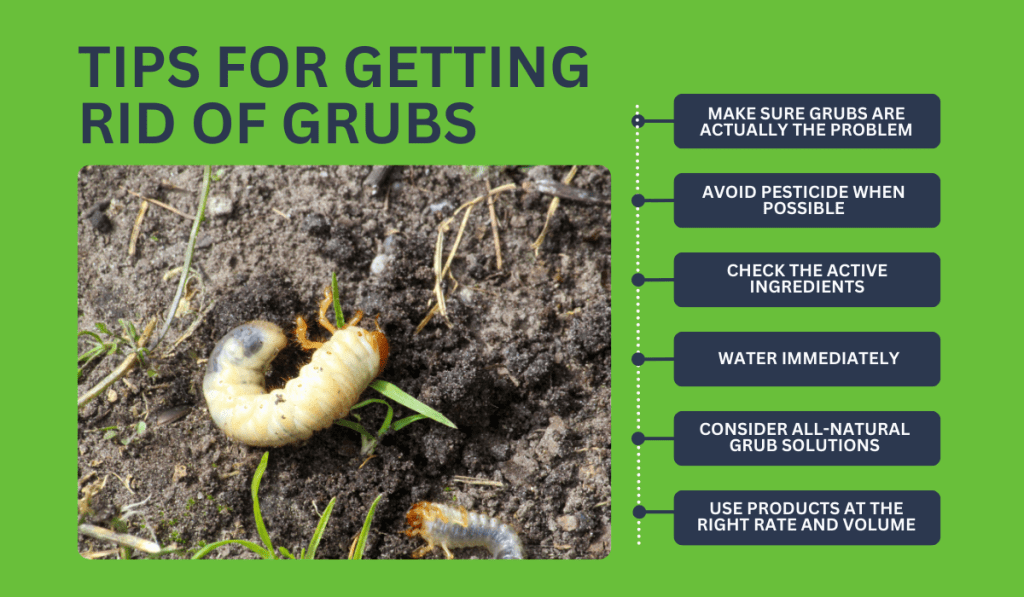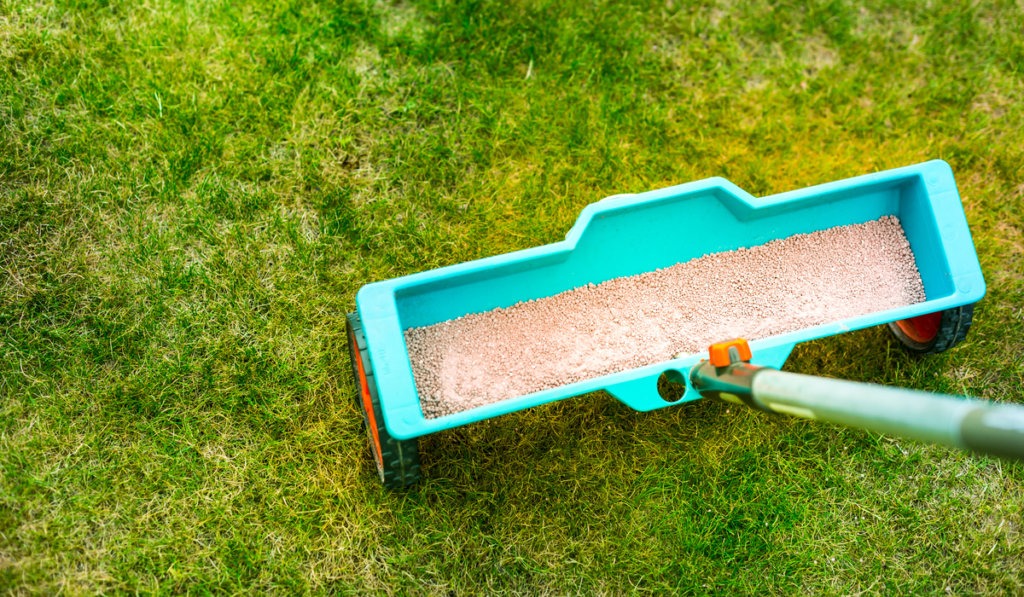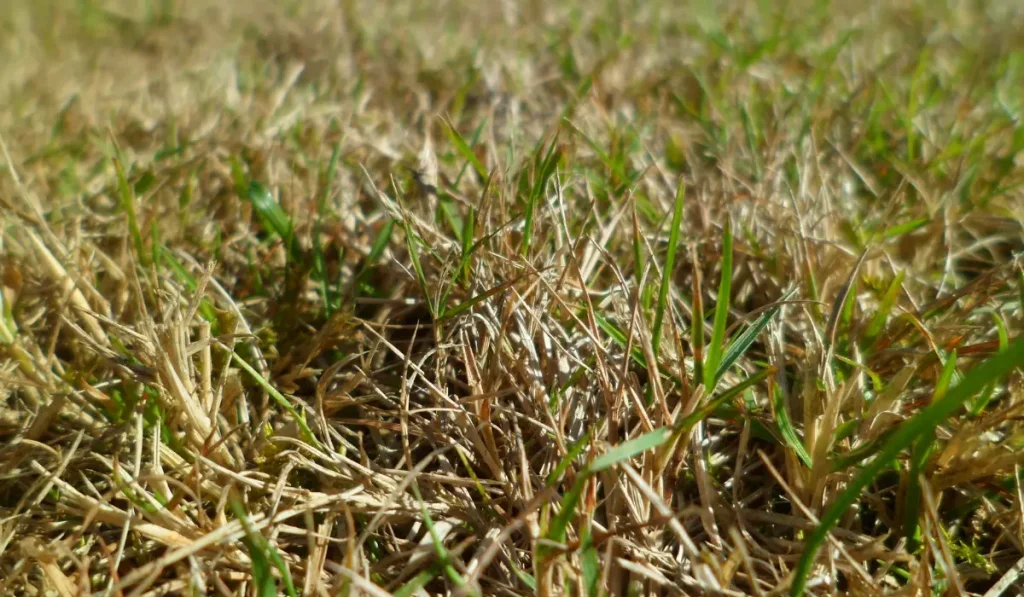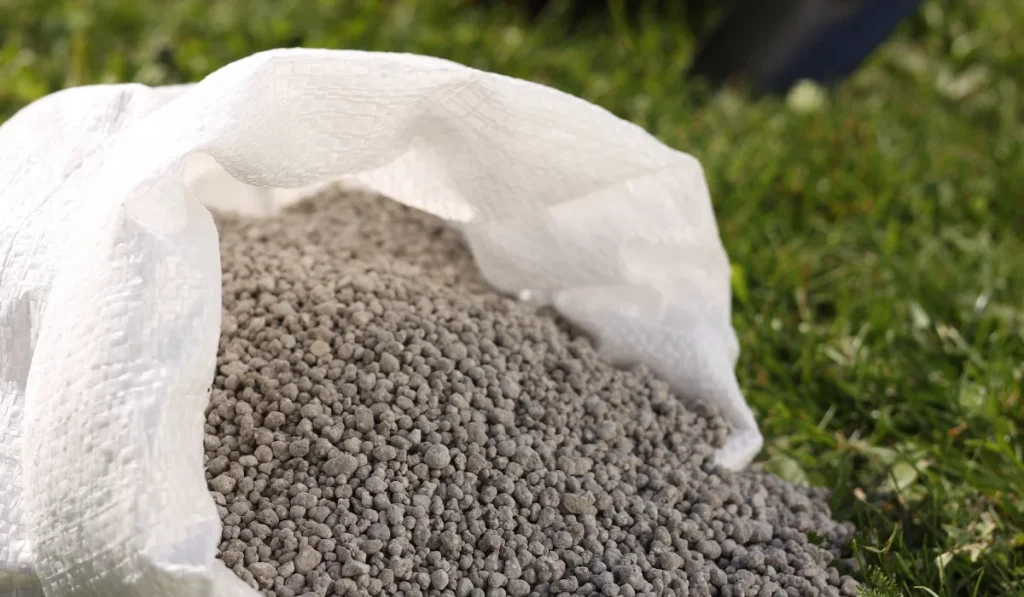Grubs are a common garden pest that can cause serious damage to your plants. Fortunately, there are several methods for controlling grubs, but the most effective approach depends on when you apply it.
In this post, we’ll discuss when to apply grub control and how to do it effectively.
Key Takeaways
- The best time to apply grub control will depend on whether you are trying to stop a current infestation or prevent a future one.
- Grub preventers target adult beetles, while grub killers target larvae.
- Depending on the scope of the grub infestation, both chemical and all-natural solutions can be used against grubs.
What Are Grubs?
Grubs are small, lawn-damaging pests that are the larval form of many different types of scarab beetle species such as European chafer grubs, June beetle grubs, Japanese beetle grubs, and more.
Usually, grubs are white and shaped like miniature Cs, curling up and feeding hungrily on the organic matter (usually grass roots) in your soil. Large grubs can decimate your lawn in very little time.
Signs of a Grub Infestation
If you have a grub problem, there will be some telltale signs like dead patches of grass. Infestations are most common in the spring through late summer, which is when grubs are most active. After that, the damage will likely stop as the grubs pupate and become adults.
Other signs of a grub problem include:
- The ability to pull back dead patches of lawn like pieces of carpet
- Areas of lawn that feel spongy when you walk on them or touch them
- Six or more grubs in a section of the lawn that appears damaged
- Birds, skunks, or raccoons tearing up your lawn (they love dining on tender grubs!)
When to Apply Grub Control: Factors to Consider
There are a few things to consider when you’re trying to decide on the right time to apply grub control. Here are some of the most significant factors.
Prevention vs. Removal
Much of this will have to do with the time of year. If it’s spring or summer, there’s a good chance that you’ll want your remedies to target the grubs themselves.
Grub treatments that aim to kill the existing population should be applied any time through the middle of summer until September, which is when they feed the most. It’s also prime time to target grubs before they turn into adult beetles.
If it’s earlier in the year than that, don’t worry. You can apply a grub killer any time you notice any damage.
To prevent grubs in the future, the best time to apply a treatment will be from April through the early fall, depending on the treatment. This will depend on whether you want to stop the grubs from hatching or if you want to kill the adults before they lay their eggs.
Is It Possible to Apply Grub Control Products Too Early?
The early bird gets the worm—but not necessarily when it comes to grub control and prevention! The best option here is to consider your goals and level of infestation when applying a curative treatment or preventive chemicals.
If you want to prevent grub damage next year or next season, consider using a treatment that is specifically designed to be used with preventive compounds. Insecticides like these are best used when they can be found in high concentrations at the root zone of the grass right at the time when the most eggs and young grubs are present.
When you time things correctly and use the proper product, you can control the majority of the grubs in your soil, helping you get ahead for next year.
After Treating for Grubs
After you apply any kind of grub insecticides to the lawn, it’s important that you monitor things carefully to make sure you’re staying on top of the situation. The grubs should be eradicated within a few days or a week. If you still see signs of major grub problems after that, you might want to try a different product.
Should You Apply Grub Control Annually?
If you had a grub problem last year, you may want to use a grub preventive method this year. Otherwise, don’t waste time and money on applying annual grub control methods unless you actually see the damage.
Also, know that grub control may not be necessary even if you do have a grub problem. A few grubs here and there are normal. You don’t need to apply grub control treatments unless the damage is extensive and widespread.
Tips for Getting Rid of Grubs

Make Sure Grubs Are Actually the Problem
Before you do anything at all, it’s important to make sure that grubs are actually the pests causing you trouble.
If you notice a dead patch on your lawn, it might not be grubs. Other common causes of dead grass include:
- Dogs that prefer to do all of their “business” in one spot
- Over- or under-fertilizing
- Over- or under-watering
- Other pests, like chinch bugs
- Lawn diseases (usually fungal diseases)
Sometimes, the lawn isn’t dead at all—just dormant. Make sure it’s actually dead and that the culprit is grubs before you take action.
Avoid Pesticide When Possible
Some healthy grasses with just a few grubs might not need an insecticide at all. A healthy lawn, when supported by regular rainfall and irrigation, can support about five grubs per square foot with no signs of turf damage.
Mow your lawn to 2-4 inches in height (depending on your grass type) and fertilize according to the grass type to make sure it develops healthy roots. Healthy grass that has been fertilized, mowed, and irrigated properly will have the right defenses to repel all kinds of insects, including those that are responsible for grub problems.
That said, if the grub population is higher than that, or if the area has a history of damage, you may want to get on top of things by using a grub control product.
Check the Active Ingredients
Be sure to take a close look at the active ingredients in your grub control product. There are many different grub control and preventative products available—some with the same active ingredients.
Preventive products that are the most effective are those containing things like clothianidin, chlorantraniliprole, thiamethoxam, and imidacloprid. These work best on newly hatched grubs in the early to late summer. They do not work as well from September to May.
Another reason to take a look at the active ingredients is to protect bees and other pollinators. When applying anything with imidacloprid, thiamethoxam, or clothianidin, you should mow the lawn before you apply it so that weeds aren’t flowering. Otherwise, bees might visit the flowers that were recently sprayed for lawn grubs and be poisoned.
The most effective insecticides to kill all life stages of grubs are those that contain trichlorfon or carbaryl. These are meant to be applied before early May if you want to get the best results.
Avoid products that contain permethrin, cyfluthrin, deltamethrin, bifenthrin, gamma-cyhalothrin, or lambda-cyhalothrin. These don’t work on grubs at any stage and won’t produce good results. You’ll be wasting your money and spinning your wheels!
Water Immediately
No matter what kind of insecticide you use, it’s important that you water immediately after you do so. This will make sure that the insecticide is thoroughly soaked into the ground.
Consider All-Natural Grub Solutions
Although store-bought products are highly effective at getting rid of grubs in most cases, you don’t have to rely solely on them. You can also use natural treatments to get rid of grub worms.
Beneficial nematodes are one such option. As a biological control, these are a good alternative to chemical control and are also inexpensive. You can release these at any time of the year, whether it’s late May or early July, and they’ll work at killing the grubs in the soil. It does take time for them to be effective for your yard, however.
Another option that’s similar to this is milky spore disease. Like nematodes, milky spores can be purchased online or at a garden store and released into the soil. The response will be slower but longer lasting.
Use Products at the Right Rate And Volume
Finally, regardless of the product you use, make sure you take a close look at the instructions. Don’t exceed the rate of application listed on the package—there’s no need for this, and it can be damaging to soil life.
The Bottom Line
There is a time and place for grub control. By understanding when to apply grub control and which products to use, you can keep your lawn healthy all season long.



